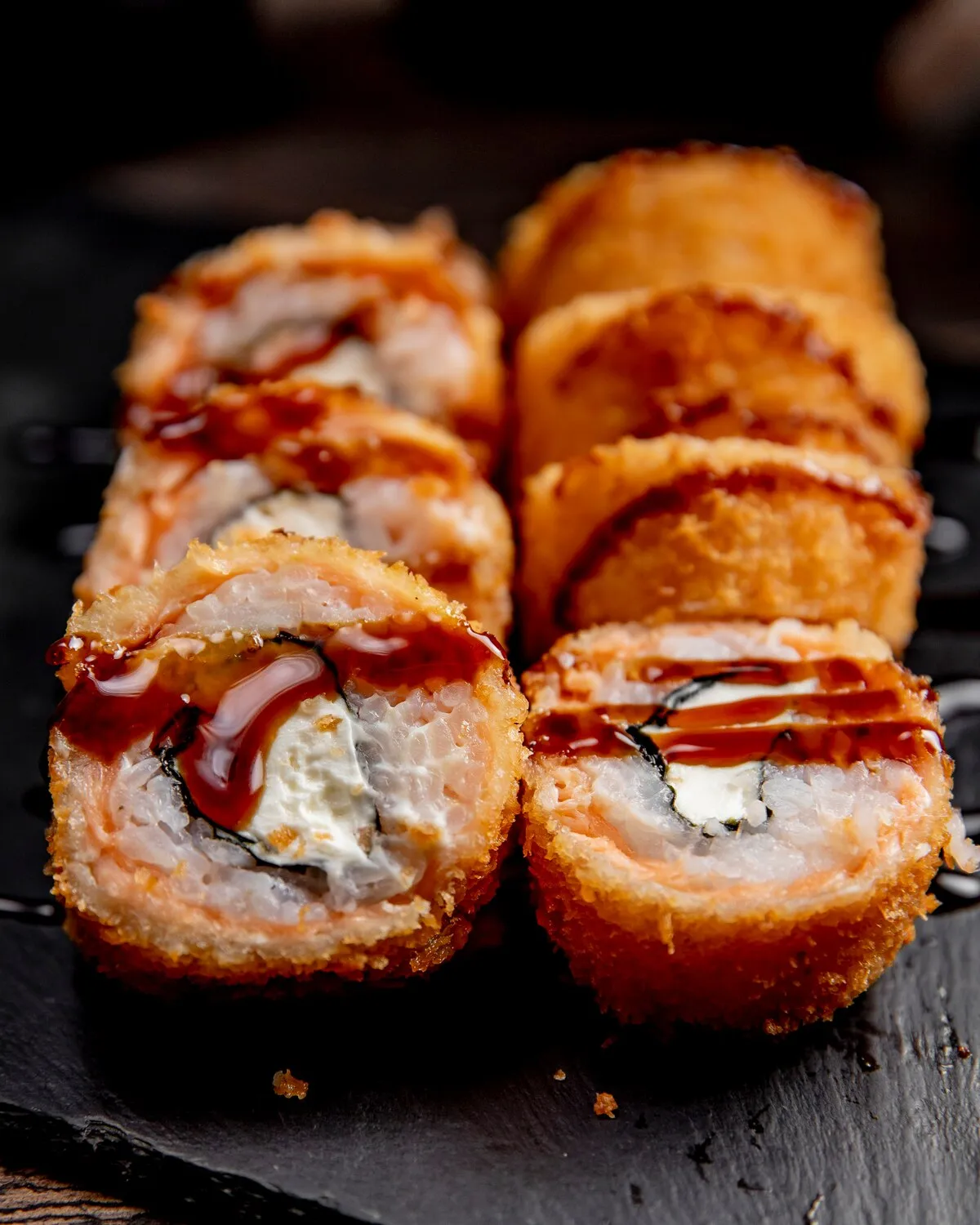
Hot Roll
Fried sushi roll, often with salmon, cream cheese, and other fillings. A popular option for those who prefer cooked sushi.
Nutrition Facts
* The % Daily Value (DV) tells you how much a nutrient in a serving of food contributes to a daily diet. 2,000 calories a day is used for general nutrition advice.
Midori Sushi
The Hot Roll is a relatively modern invention, diverging from traditional Japanese sushi techniques. It arose from the increasing popularity of sushi in the United States and the desire to cater to a wider palate, particularly those less accustomed to raw fish. The introduction of cooked and deep-fried sushi elements reflects adaptation and innovation in response to American tastes.
Hot Rolls represent a fusion of Japanese sushi techniques with American culinary preferences. They exemplify the globalization and adaptation of food cultures, reflecting the Americanized sushi scene.
American Sushi Innovation
Hot Rolls are a prime example of how sushi has evolved outside of Japan to appeal to local tastes. It highlights the willingness to experiment with non-traditional ingredients and cooking methods.
Accessibility for Beginners
The cooked nature of the ingredients makes Hot Rolls a popular entry point for people who are new to sushi or hesitant about eating raw fish.
Part of a Diverse Sushi Landscape
Hot Rolls contribute to the wide variety of sushi options available in many restaurants, catering to different dietary preferences and adventurousness.
Hot Rolls offer a contrasting and satisfying blend of textures and flavors. Creamy, savory, and slightly sweet notes are typical, balanced by the crispiness of the fried exterior.
The primary flavors derive from the combination of cooked salmon (or other cooked seafood), cream cheese, and the deep-fried rice and nori seaweed wrapper. Salmon contributes a rich, savory, and slightly oily flavor. Cream cheese adds a creamy, tangy, and subtly sweet element. The frying process imparts a crispy texture and nutty, toasted flavor to the rice and nori. Additional ingredients like avocado can contribute a smooth, buttery flavor, while sauces like spicy mayo or eel sauce can introduce heat and umami.
Cold Rice is Crucial
Using cold sushi rice helps the roll maintain its shape during the frying process and prevents it from becoming overly mushy.
Tempura Batter or Panko Breadcrumbs
Experiment with different coatings for the roll before frying. Tempura batter will provide a light, crispy coating, while panko breadcrumbs offer a more substantial, crunchy texture.
Hot Oil, Quick Fry
Ensure the oil is hot enough (around 350-375°F) to quickly crisp the roll without soaking it in oil. Fry for a short time on each side until golden brown.
Don't Overfill
Overfilling the roll can make it difficult to close securely and may cause it to burst during frying.
Explore additional Sushi dishes and restaurants
Explore SushiDiscover top dining spots and culinary experiences in Bombinhas.
Explore BombinhasLearn more about the food culture, restaurant scene, and culinary heritage of Brazil.
Explore Brazil